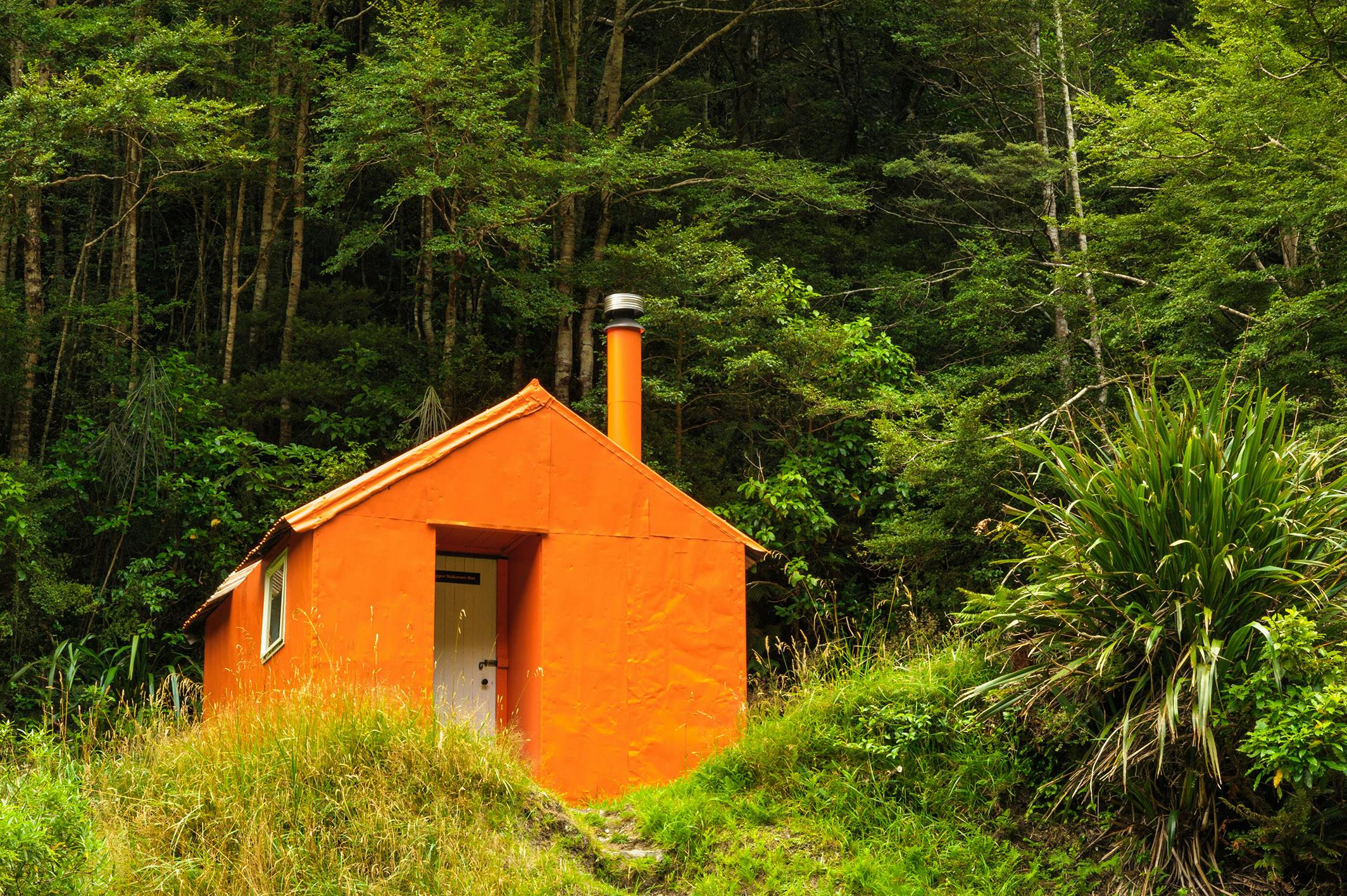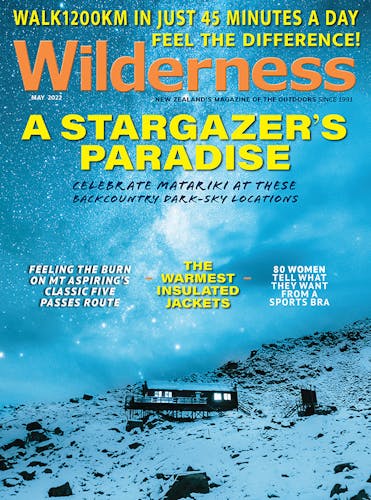This bright orange four-bunker makes a pleasant haven in the headwaters of a historic Ruahine River.
It was up the Makaroro River that missionary explorer William Colenso toiled in 1845, on his first trip to the Ruahine Range. Colenso was guided by a strong party of Māori – although only one of them had been over the route before. By the middle of the 19th century, Māori knowledge of their former mountain passes was diminishing as sea travel in European boats offered faster and often safer means of travelling around New Zealand.
Colenso, though, had been beguiled by the snowy heights of the Ruahine Range as soon as he first visited Ahuriri (present-day Napier). He wanted to see the mountains firsthand, to revel in the beauty of alpine plants, and to reach the far side.
This four-day tramp from Wakarara Road follows Colenso’s route up the Makaroro River and onto the Ruahine tops, before branching off to Upper Makaroro Hut. While days can be organised without the need of a tent, carrying one opens the opportunity of camping on the tops.
From the car park near the end of Wakarara Road, follow the farm road (no vehicle access) to the river, and head upstream. Lupins and other exotic weeds give the landscape a secondhand look at first, but further upstream is the Ruahine Forest park boundary and more natural terrain. The river closes in, with steep forested spurs rising above. Pass the Gold Creek and Sparrowhawk tracks, and continue upriver, fording where necessary.
At a prominent river fork, there’s a small stone monument to Colenso, at the base of what is now known as Colenso Spur. It was from near here that Colenso and his companions ascended onto the tops. Today’s walkers follow in their footsteps. Steep, mellow, steep goes the ascent through the beech forest until higher up in a few places slips have gouged the track edge into a narrow goat route. The rounded slopes of Te Atua Mahuru abound in alpine flowers during the summer, and there are tarns here for water and good camping.
Travel along the tops is unmarked, but is straightforward, past Ina Rock, beside a large tarn shaped like a giant guitar pick, over Tupari and then onto the moor-like tops where Totara Spur branches off. Kylie Biv, recently painted bright blue, is located down a side-spur. It would be a welcome shelter during inclement weather.
Take care locating the turn-off to Totara Spur, which can be tricky to find in mist. As its name says, groves of Hall’s tōtara line the spur, and titipounamu sometimes flock in the stunted forest.
Lower down, a typically steep Ruahine descent through beech forest leads to Upper Makaroro Hut. Located on a bench above the Makaroro River, the four-bunker is painted a welcoming bright orange. It was built in 1956, during the first year the New Zealand Forest Service took over deer control, so is a bit of living history itself.
Downstream, the Makaroro twists and turns like a serpent, through small gorges, splashing over gravelly fords in places, and through deep green pools in others.
What was once a fairly straightforward route down the gravelly bed of the upper Makaroro River is scoured out, and now requires scrambling, swimming deep pools, and cliff-hugging traverses. An easier option is to take the Parks Peak Track. This involves crossing the Makaroro, climbing a steep spur to Parks Peak Hut, then turning south to descend a long but otherwise untaxing bush track to complete a loop.
- Distance
- 30.3km
- Total Ascent
- 2500m
- Grade
- Difficult
- Time
- Wakarara Road to Colenso Spur, 3-4hr; To Upper Makaroro Hut via Te Atua Mahuru and Tōtara Spur, 8-10hr; To Parks Peak Hut, 2.5-3hr; To Wakarara Road 4-5hr
- Accom.
- Kylie Biv (free, two bunks), Upper Makaroro Hut ($5, four bunks), Parks Peak Hut ($5, six bunks)
- Access
- Wakarara Road. Logging operations sometimes restrict access, so check before you go
- Map
- BK37
GPX File
- Upper Makaroro Hut via Te Atua Mahuru (gpx, 22 KB)
GPX File
- Your device does not support GPX files. Please try a different device.








